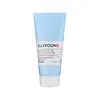What's inside
What's inside
 Key Ingredients
Key Ingredients

 Benefits
Benefits

 Concerns
Concerns

No concerns
 Ingredients Side-by-side
Ingredients Side-by-side

Water
Skin ConditioningPropanediol
SolventGlycerin
HumectantSqualane
EmollientCaprylic/Capric Triglyceride
MaskingPolyglyceryl-3 Methylglucose Distearate
Emulsifying1,2-Hexanediol
Skin ConditioningAmmonium Acryloyldimethyltaurate/Vp Copolymer
Carbomer
Emulsion StabilisingTromethamine
BufferingGlyceryl Caprylate
EmollientEthylhexylglycerin
Skin ConditioningBetaine
HumectantCeramide NP
Skin ConditioningTocopherol
AntioxidantWater
Skin ConditioningHelianthus Annuus Seed Oil
EmollientGlycerin
HumectantCetearyl Alcohol
EmollientCaprylic/Capric Triglyceride
MaskingCeteareth-20
CleansingTocopheryl Acetate
AntioxidantStearic Acid
CleansingPhenoxyethanol
PreservativeButyrospermum Parkii Butter
Skin ConditioningDimethicone
EmollientCananga Odorata Flower Oil
MaskingCarbomer
Emulsion StabilisingPotassium Sorbate
PreservativeHippophae Rhamnoides Fruit Oil
Skin ProtectingCaprooyl Tetrapeptide-3
Skin ProtectingDextran
Macadamia Ternifolia Seed Oil
EmollientPrunus Amygdalus Dulcis Oil
Skin ConditioningDisodium EDTA
Ethylhexylglycerin
Skin ConditioningSodium Hydroxide
BufferingSodium Benzoate
MaskingRosmarinus Officinalis Leaf Extract
AntimicrobialWater, Helianthus Annuus Seed Oil, Glycerin, Cetearyl Alcohol, Caprylic/Capric Triglyceride, Ceteareth-20, Tocopheryl Acetate, Stearic Acid, Phenoxyethanol, Butyrospermum Parkii Butter, Dimethicone, Cananga Odorata Flower Oil, Carbomer, Potassium Sorbate, Hippophae Rhamnoides Fruit Oil, Caprooyl Tetrapeptide-3, Dextran, Macadamia Ternifolia Seed Oil, Prunus Amygdalus Dulcis Oil, Disodium EDTA, Ethylhexylglycerin, Sodium Hydroxide, Sodium Benzoate, Rosmarinus Officinalis Leaf Extract
 Reviews
Reviews

Ingredients Explained
These ingredients are found in both products.
Ingredients higher up in an ingredient list are typically present in a larger amount.
This ingredient is an emollient, solvent, and texture enhancer. It is considered a skin-softener by helping the skin prevent moisture loss.
It helps thicken a product's formula and makes it easier to spread by dissolving clumping compounds.
Caprylic Triglyceride is made by combining glycerin with coconut oil, forming a clear liquid.
While there is an assumption Caprylic Triglyceride can clog pores due to it being derived from coconut oil, there is no research supporting this.
Learn more about Caprylic/Capric TriglycerideCarbomer is a polymer of acrylic acid. Its main role is to create a gel consistency.
A high amount of carbomer can cause pilling or balling up of products. Don't worry, most products contain 1% or less of carbomer.
Ethylhexylglycerin (we can't pronounce this either) is commonly used as a preservative and skin softener. It is derived from glyceryl.
You might see Ethylhexylglycerin often paired with other preservatives such as phenoxyethanol. Ethylhexylglycerin has been found to increase the effectiveness of these other preservatives.
Glycerin is already naturally found in your skin. It helps moisturize and protect your skin.
A study from 2016 found glycerin to be more effective as a humectant than AHAs and hyaluronic acid.
As a humectant, it helps the skin stay hydrated by pulling moisture to your skin. The low molecular weight of glycerin allows it to pull moisture into the deeper layers of your skin.
Hydrated skin improves your skin barrier; Your skin barrier helps protect against irritants and bacteria.
Glycerin has also been found to have antimicrobial and antiviral properties. Due to these properties, glycerin is often used in wound and burn treatments.
In cosmetics, glycerin is usually derived from plants such as soybean or palm. However, it can also be sourced from animals, such as tallow or animal fat.
This ingredient is organic, colorless, odorless, and non-toxic.
Glycerin is the name for this ingredient in American English. British English uses Glycerol/Glycerine.
Learn more about GlycerinWater. It's the most common cosmetic ingredient of all. You'll usually see it at the top of ingredient lists, meaning that it makes up the largest part of the product.
So why is it so popular? Water most often acts as a solvent - this means that it helps dissolve other ingredients into the formulation.
You'll also recognize water as that liquid we all need to stay alive. If you see this, drink a glass of water. Stay hydrated!
Learn more about Water